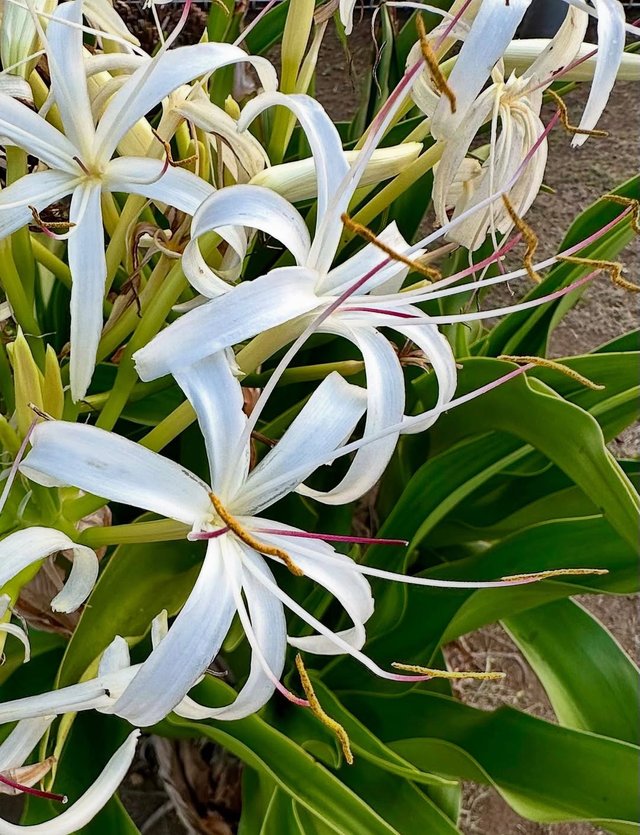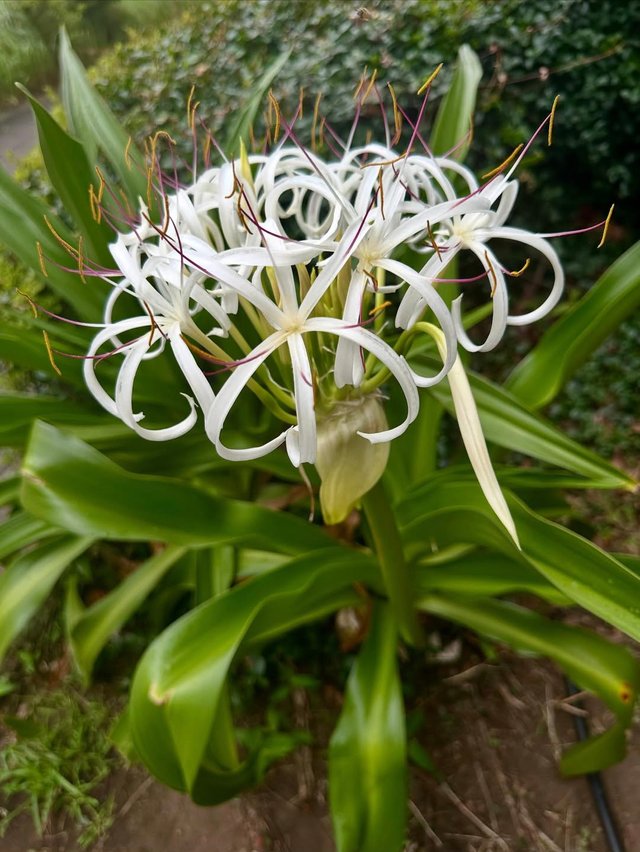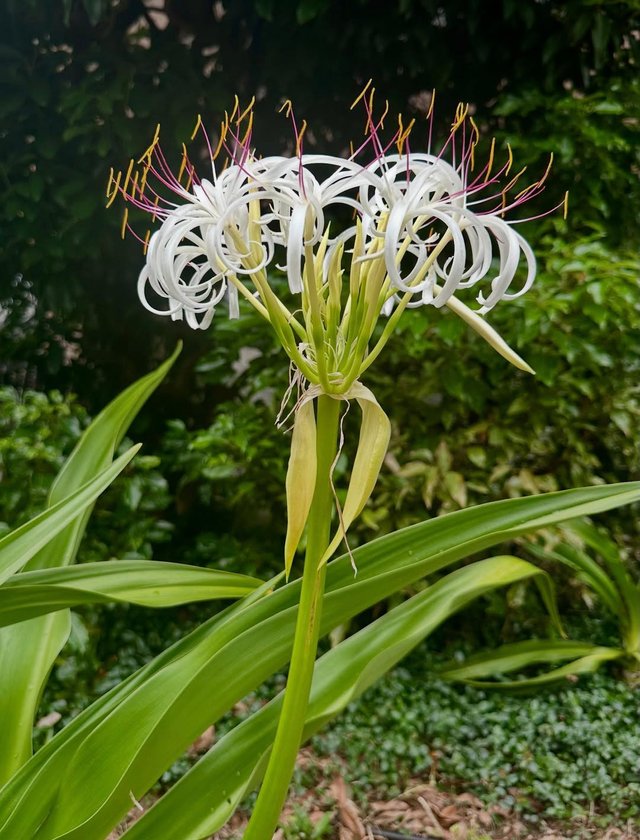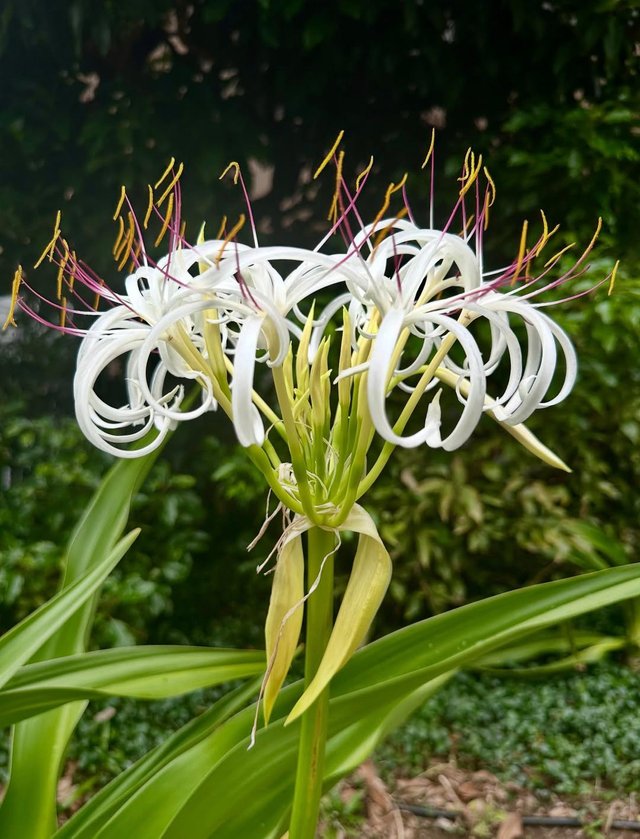Crinum asiaticum
Crinum asiaticum, commonly known as the Giant Crinum Lily, Poison Bulb, or Asian Crinum, is a strikingly beautiful, large, tropical plant that commands attention wherever it grows. Belonging to the family Amaryllidaceae, this perennial herb is native to tropical Asia but has found its way to warm coastal regions all over the world due to its dramatic ornamental appeal and resilience.Crinum asiaticum is best known for its large, strap-like, glossy green leaves that emerge in an elegant rosette from a giant underground bulb. Each leaf can reach a length of 1 to 1.5 meters, creating a fountain-like canopy. From the center of this leafy cluster rises a stout, tall flower stalk bearing a cluster of up to 30-40 white, spidery flowers, each with long, slender petals and prominent stamens tinged with purple or red.
Crinum asiaticum contains alkaloids like lycorine and crinine, which are toxic if ingested. These compounds can cause nausea, vomiting, diarrhea, and in large doses, more serious neurological or cardiac effects. The sap can also irritate the skin and eyes, so it's recommended to handle with care and keep it away from pets and children.Despite this, the plant has been used in traditional medicine for a variety of ailments — from skin infections to swelling. However, self-medication with this plant is highly discouraged due to its potency and toxicity.
Crinum asiaticum is a breathtaking plant that blends the beauty of ornamental horticulture with a fascinating natural chemistry. It embodies the lushness of the tropics and the mystery of poisonous plants. When grown with care and respect, it can be one of the most rewarding statement plants in a tropical or subtropical garden.Whether you're a botanist, gardener, or just someone who admires the strange and beautiful in nature, Crinum asiaticum offers a compelling story of beauty, danger, and ecological importance.



